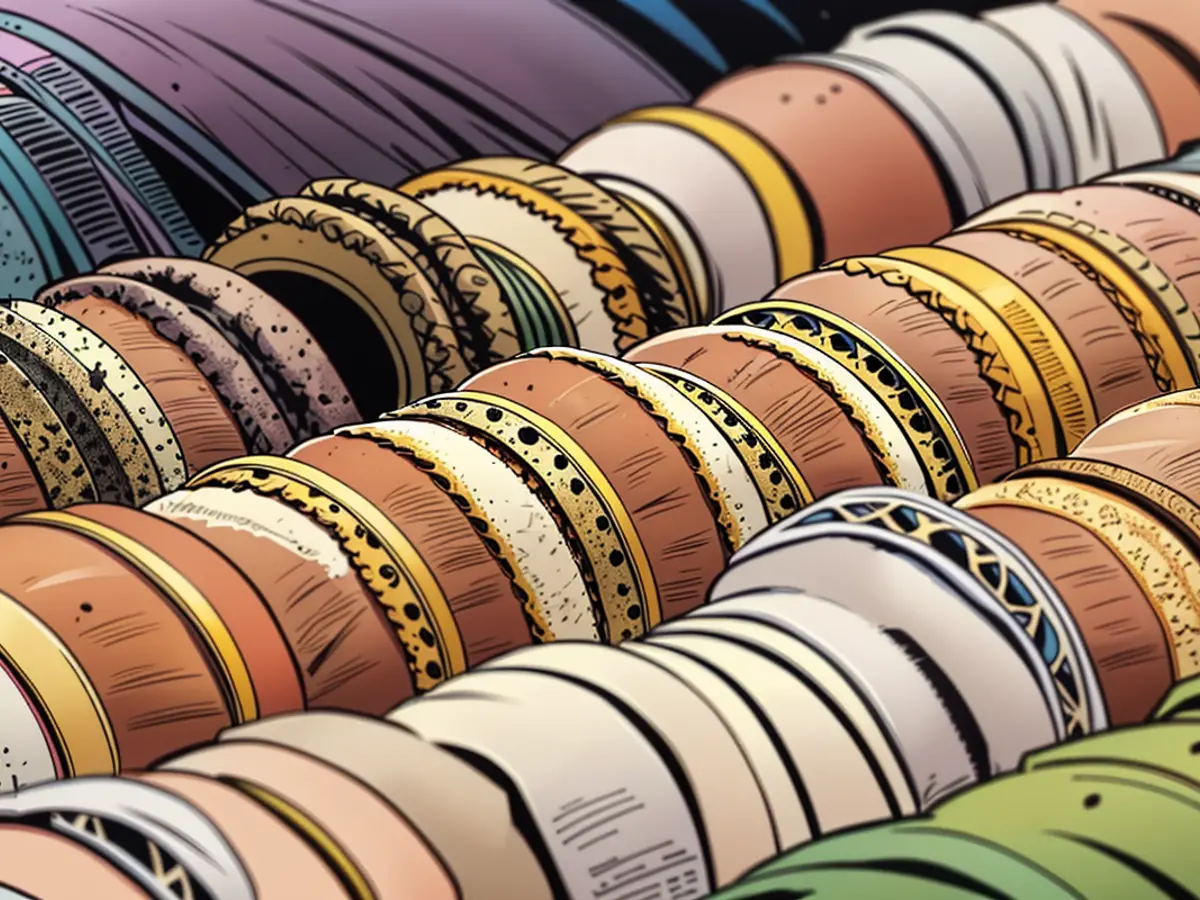- "Macarons and Co. Farewell to Regular Desserts, Welcome to Luxury Sweets" or "Macarons and Co.: Goodbye Ordinary Desserts, Hello Elite Sweets"
Germans less frequently mix up "Macaron" with France's President Macron due to the rising popularity of macarons, those trendy little almond cookies. Even budget stores now stock these delights. These scrumptious bite-sized treats are part of a dessert and snack transformation.
Older generations (60+) might still picture dessert as apple sauce, compote, or rice pudding, whereas middle-aged Germans view it as chocolate pudding or junket. However, today's kids and young adults (Generation Alpha) discuss their beloved macarons or adore Pavlova.
Many restaurants now showcase a variety of desserts on their menus, inspired by America: cakes, creams, crepes, ice cream, shakes, (bubble-)waffles - all in one. Yet, sometimes, simplicity is best.
Cultural scientist Peter Peter observes that dessert has significantly changed. In the past, Germany had a modest culinary tradition, and dessert often served as a means to utilize leftovers, such as bread pudding. "American fried bread in butter is called 'French Toast'. Now, many here also say that, as it sounds cooler," states Peter.
The transformation of dessert from basic to fine art
Over the past few years, dessert in Germany has shifted towards luxurious pastry. A trend favouring miniature sweet creations has emerged, with a move away from large pudding or fruit compote portions. Munich author and gastronome Peter Peter, whose book is called "Blood Oranges - A Journey to the Citrus Fruits of Italy," comments, "Dessert has become more refined, even Mediterranean. Sweet pastries are nice, but they were more of an obligation. Italian cuisine has had a significant impact with classic dishes like panna cotta and tiramisu. More sophisticated desserts also stem from the French tradition: crème brûlée, chocolate mousse, éclairs, macarons."
German desserts such as ice cream with hot raspberries, north German red groats, Bohemian pastries like apple strudel, palatschinken, and Kaiserschmarrn remains popular in upscale dining.
In high-end dining, dessert has nearly equalized with other courses. Dessert experts, or patissiers, focus on various textures: cold, warm, hard, soft. They often create plate art. "Luxury desserts include fruit, usually berries, a bit of dough, something with cream or fruit emulsion, and there must be ice cream," says Peter.
Peter notes that, unlike other parts of the kitchen, the regional trend has yet to impact dessert. He's never seen a gooseberry ice cream or a lingonberry pudding on offer in an upscale restaurant.
Even in modest portions, modern dessert plates can be quite filling, says Peter. However, many people, particularly women, look forward to artistically designed dessert plates.
The expression "dessert stomach" represents the belief that there's always room for something sweet after a meal. Even dieters find a way to indulge in dessert.
This perspective sheds light on recent trends like cupcakes, mochis, baklava variations such as pistachio rolls, and macarons. With their petite size, macarons, resembling a 2-euro coin, seem more acceptable. And the light, airy Pavlova dessert is popular.
Macarons
Macarons signify Parisian elegance. They gained mainstream recognition nearly 20 years ago when American director Sofia Coppola, in her film "Marie Antoinette," depicted the later executed queen (Kirsten Dunst) cherishing the vibrant treats.
Queen Catherine de Medici is said to have introduced the almond flour biscuit from Italy in the 16th century as a married queen. Yet, the well-known double-decker mini-burgers filled with filling only emerged in 1930, invented by Pierre Desfontaines, a cousin of the Ladurée family. Ladurée remains a famous brand today. Renowned pastry chef Pierre Hermé is credited with revitalizing the macaron, launching new recipes and flavors - vivid and aromatic - in Paris from the late 1990s. In Switzerland, macarons are called Luxemburgerli, like those at Spruengli in Zurich.
Pavlova
Pavlova - a meringue cake filled with cream and fruit - is considered an Antipodean dessert. It was named after Russian ballerina Anna Pavlova (1881-1931). During the Christmas season in the 1920s, she toured Australia and New Zealand, experiencing their summer heat.
A chef created the white dessert in her honor. The cream was said to remind Pavlova of her homeland's snow. The origin of the whipped cream meringue remains uncertain, with some claiming it was first served in Australia and others in New Zealand.
Recently, Pavlova has gained popularity in Europe. A specialized chain from Estonia is planning to open a Pavlova café on Berlin's Kurfüstendamm this summer.
The European Union has played a role in the dessert transformation in Germany, as many culinary influences, such as macarons, originate from France. The popularity of macarons in Germany can be attributed in part to the EU's open borders, allowing for the spread of food trends.
Pavlova, another popular dessert, has also gained popularity in Europe, with a specialized chain from Estonia planning to open a Pavlova café in Berlin this summer.






